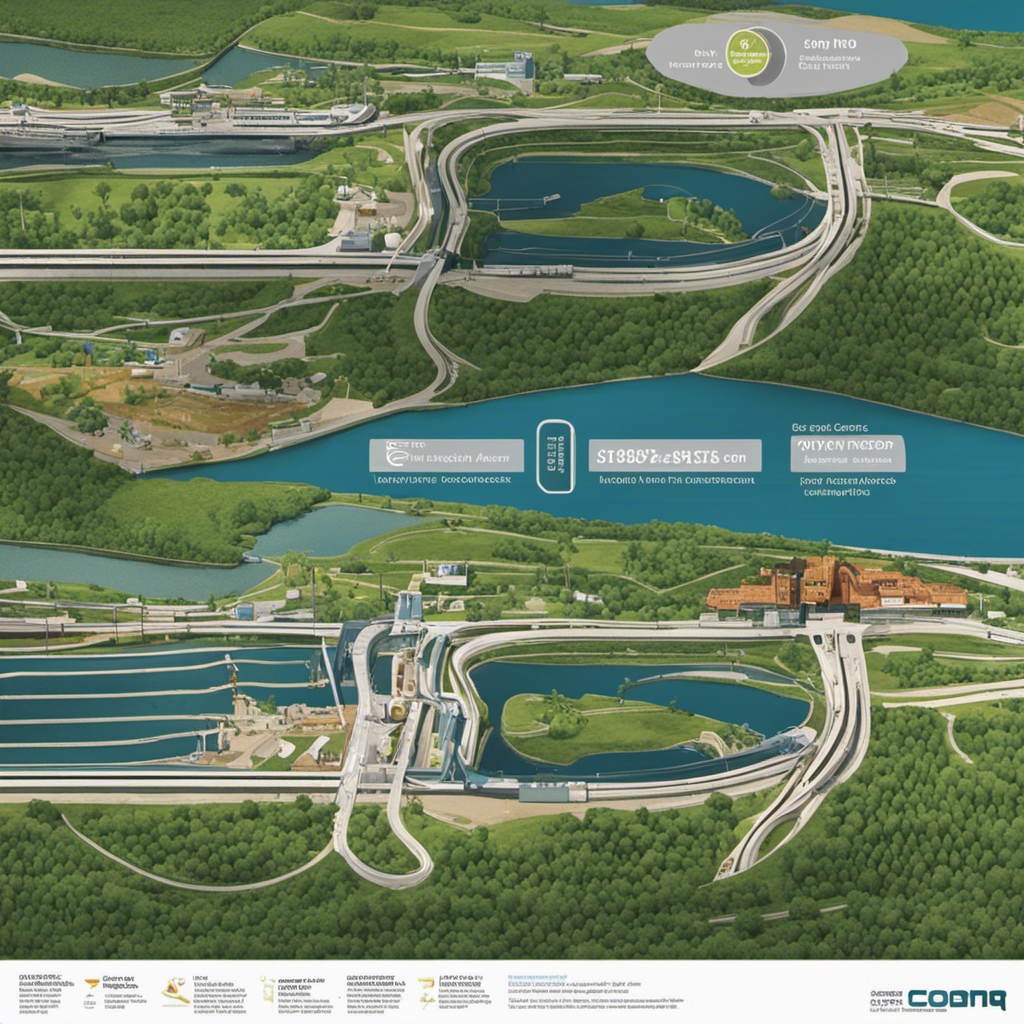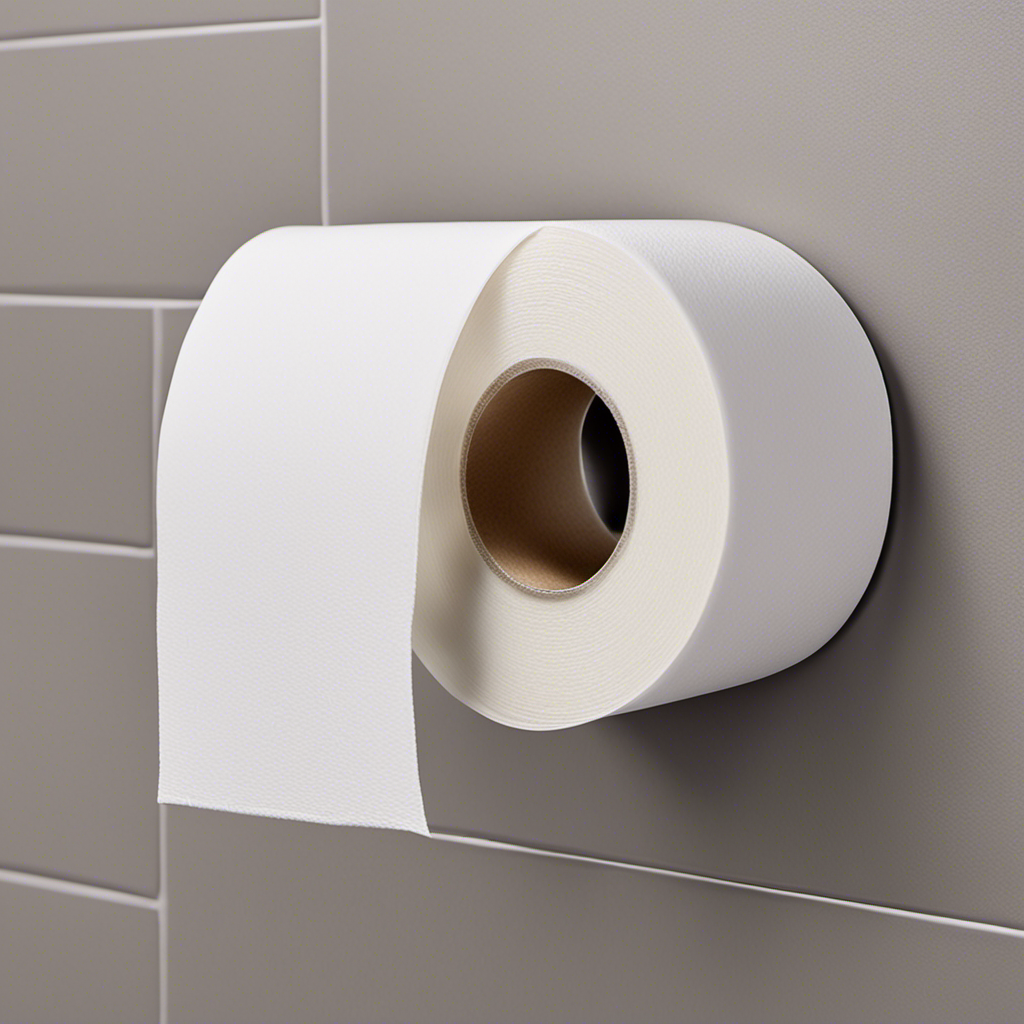As the saying goes, ‘knowledge is power.’ When it comes to choosing the right sewer system, having the right information is crucial.
In this article, I will guide you through the process of comparing the cost, environmental impact, maintenance requirements, and suitability of different sewer systems.
By analyzing the data and considering the specific needs of your location, you will be able to make an informed decision that not only meets your needs but also minimizes the environmental impact.
Let’s dive in and explore the world of sewer systems together.
Key Takeaways
- Different types of sewer systems have varying suitability for different locations, with conventional sewer systems being suitable for urban areas, septic tank systems for rural areas, vacuum and pressure sewer systems for areas with limited space availability or high water tables, and composting toilet systems for various locations.
- Cost considerations should be taken into account when selecting a sewer system, with conventional sewer systems having higher upfront installation costs but potentially greater long-term savings due to lower maintenance and repair costs.
- Environmental impact is an important factor to consider, with water pollution reduction, energy consumption, greenhouse gas emissions, and land use requirements all playing a role in evaluating sewer systems.
- Maintenance requirements, such as pumping frequency, regular inspections, cleaning procedures, and component replacement, should be considered to ensure the proper functioning of the sewer system and prevent any issues or breakdowns.
Types of Sewer Systems
I think the types of sewer systems mentioned, such as conventional, septic tank, vacuum, pressure, and composting toilet systems, provide a good starting point for comparing their cost, environmental impact, maintenance requirements, and suitability for different locations.
When it comes to installation requirements, conventional sewer systems require extensive underground pipe networks, making them more suitable for urban areas with existing infrastructure. Septic tank systems, on the other hand, require sufficient space for the tank and drain field, making them more suitable for rural areas. Vacuum and pressure sewer systems are efficient alternatives for areas with limited space availability or high water tables.
Composting toilet systems, although not as common, offer an environmentally friendly option that can be used in various locations.
In terms of comparing efficiency, conventional sewer systems can handle large volumes of wastewater, while septic tank systems require regular pumping and maintenance. Vacuum and pressure sewer systems are energy-efficient options that require less maintenance. Composting toilet systems offer a sustainable solution with minimal water usage and low maintenance requirements.
Cost Considerations
Installation costs, maintenance costs, repair costs, and energy costs are important factors to consider when evaluating different sewer systems. In terms of installation expenses, conventional sewer systems tend to have higher upfront costs compared to septic tank systems or composting toilet systems. However, when it comes to long-term savings potential, conventional sewer systems may offer greater benefits due to their lower maintenance and repair costs.
On the other hand, vacuum sewer systems and pressure sewer systems have higher installation expenses but can result in significant energy savings over time. It is crucial to carefully analyze the specific requirements of each location and consider the long-term financial implications when selecting a sewer system.
Environmental Impact
Water pollution reduction, energy consumption, greenhouse gas emissions, and land use requirements are all important factors to consider when evaluating different sewer systems. As a technical analyst, I have conducted extensive research on the environmental impact of various sewer systems.
One key aspect to focus on is water conservation. By implementing sewer systems that minimize water pollution, we can protect our precious water resources and promote sustainability.
Additionally, biodiversity preservation plays a crucial role in maintaining a healthy ecosystem. Choosing a sewer system that minimizes its impact on local ecosystems will help preserve the diverse plant and animal species that rely on these habitats.
It is evident that when evaluating sewer systems, prioritizing water conservation and biodiversity preservation is essential for a greener and more sustainable future.
Maintenance Requirements
Pumping frequency is an important aspect to consider when evaluating the maintenance requirements of different sewer systems. It determines how often the system needs to be emptied and can vary depending on factors such as system capacity and usage.
Regular inspections are necessary to identify any potential issues or blockages in the system. These inspections help in detecting problems early on and prevent any major breakdowns or failures.
Cleaning procedures, such as jetting or mechanical cleaning, are essential to remove any accumulated debris or sediment. This helps in maintaining the flow capacity of the system and prevents any clogs or backups.
Component replacement is crucial to ensure the system’s proper functioning and prevent any breakdowns. Over time, components may wear out or become damaged, and replacing them in a timely manner is necessary to avoid any disruptions in the system’s operation.
Lastly, implementing odor control measures is essential to maintain a pleasant environment and prevent any complaints from the surrounding community. This can include using chemicals or other methods to neutralize or mask any unpleasant odors that may arise from the sewer system.
It is crucial to regularly monitor and maintain these aspects to ensure the efficient and effective operation of a sewer system. By addressing pumping frequency, inspections, cleaning procedures, component replacement, and odor control measures, the maintenance requirements of different sewer systems can be effectively managed.
Suitability for Different Locations
Living in a rural area with a high water table, I had to carefully consider the space availability and potential for flooding when selecting a sewer system.
When comparing the suitability of different sewer systems for urban and rural areas, several factors come into play. Urban areas often have limited space availability and higher population densities, making conventional sewer systems more suitable due to their ability to handle larger volumes of wastewater.
In contrast, rural areas may have more space but face challenges like high water tables and flooding. In these cases, septic tank systems or pressure sewer systems may be more appropriate. Septic tank systems work well in rural areas with ample space, while pressure sewer systems can overcome the limitations posed by high water tables.
Ultimately, the choice of sewer system depends on the specific needs and conditions of the location.
Final Decision: Choosing the Right Sewer System
When choosing the right sewer system, there are several factors to consider. First, you need to weigh the efficiency of the system against its cost. A system that is more efficient may come with a higher upfront cost, but it can lead to long-term savings in terms of energy consumption and maintenance requirements.
Long-term sustainability is another important factor to consider. You want a sewer system that is environmentally friendly and reduces water pollution, energy consumption, and greenhouse gas emissions.
The impact on the community and environment is also crucial. You want a system that minimizes disruption to the local ecosystems and takes into account land use requirements.
Maintenance and repair requirements should not be overlooked. Consider the pumping frequency, inspection needs, cleaning procedures, and the potential replacement of components.
Lastly, the chosen sewer system should be suitable for the specific location constraints, such as urban or rural areas, high water table areas, flood-prone areas, and areas with limited space availability.
Frequently Asked Questions
What Are the Advantages and Disadvantages of Each Type of Sewer System?
The advantages and disadvantages of each type of sewer system vary. Conventional systems offer reliability but high maintenance costs. Septic tanks are cost-effective but require regular pumping. Vacuum and pressure systems are efficient but expensive to install. Composting toilets are environmentally friendly but may have limited capacity.
How Do Different Sewer Systems Affect Water Quality and Aquatic Ecosystems?
Different sewer systems have varying impacts on water quality and aquatic ecosystems. Factors such as water treatment methods, discharge locations, and biodiversity conservation measures contribute to the overall environmental impact of each system.
Are There Any Government Regulations or Incentives Related to Choosing a Specific Sewer System?
Government regulations and incentives play a crucial role in determining the choice of sewer system. These factors help ensure compliance with environmental standards and provide financial support for adopting sustainable and efficient sewer systems.
What Are Some Common Issues or Challenges That Homeowners or Municipalities Face When Maintaining Different Sewer Systems?
Maintaining different sewer systems can pose challenges for homeowners and municipalities. Issues like clogged pipes, pump failures, and odor problems require regular inspections, cleaning, and component replacements to ensure proper functioning.
How Does the Local Climate or Weather Conditions Impact the Performance and Effectiveness of Different Sewer Systems?
The local climate plays a crucial role in the performance and effectiveness of different sewer systems. Factors like rainfall, temperature, and soil conditions impact their functionality, durability, and maintenance requirements. Climate considerations are vital when choosing the right sewer system.
Conclusion
After comparing the cost, environmental impact, maintenance requirements, and suitability of various sewer systems, it is clear that choosing the right system is crucial.
Considerations such as installation, maintenance, repair, and energy costs must be carefully weighed to ensure long-term savings. Additionally, the environmental impact, including water pollution reduction, energy consumption, and greenhouse gas emissions, should not be overlooked.
Maintenance requirements, such as pumping frequency and odor control measures, must be taken into account. Finally, the suitability of different systems in various locations, considering factors like flooding and limited space availability, is essential.
Making an informed decision will minimize environmental impact and meet the specific needs of the location.










